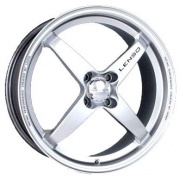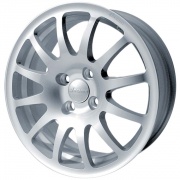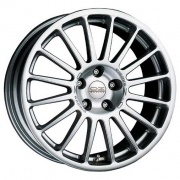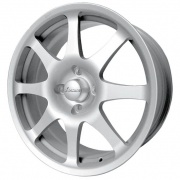Let's start with the most important thing: the tire pressure should be the same as indicated by the car manufacturer. And since an ordinary modern driver usually doesn’t have a clue about this, manufacturers specifically for all of us hang the “cheat sheet” with the necessary numbers on the middle body post on the driver's side or on the gas tank flap. Moreover, it may turn out that the crib will indicate different pressures for different sizes on the front and rear axles, this is quite common. As well as different pressures for different tire sizes, because even with purchase you can put tires of different diameters.
But the worst thing is not low or high pressure, unless, of course, it is globally different from the recommended one, but different pressure on all four tires. At the same time, get ready not only for the unexpected behavior of the tires, but also for poor handling of the car.
It is worth remembering that pressure should be measured only on cold tires, that is, those on which the car has been without movement for at least several hours.
How often should I check tire pressure? It should be guided by simple and uncomplicated rules: it makes sense to check the pressure in front of a long road, as well as generally check different car systems and, say, the presence of an washer. If we are talking about the city, then if there is a suspicion that the tires "lowered" or the handling has changed, and for pedants - about once a month.
The air pressure in the enclosed space changes by about 0.1 bar for every 10 degrees of temperature change. This should be taken into account in different seasons. Even an ordinary driver can notice in the winter and in the near winter periods how the tires warm up.
And so, even as the weather affects pressure, then overload of course, too. Of course, it is not worth consciously overloading the car, but sometimes it is necessary. If the car is overloaded, then a simple advice to increase pressure at least in the rear tires by 0.2–0.3 bar can slightly improve the situation. And, of course, do not forget to return the pressure back after such a trip.
But this, of course, makes sense when you roughly understand what you are doing and you have a device for measuring pressure - a manometer. Moreover, reliable and you know how to use it, because on average, on simple devices for pumping tires, the accuracy of the built-in pressure gauges is approximately "by eye". That is, the maximum that you can and even probably should be verified before a long or loaded trip is the same pressure on all tires. In the end, with a heavy load it is better, much safer and more efficient to change your driving style to a calmer one than to drive on an overload, but tire pressure-adjusted!
And, finally, it is worth saying that now a tire pressure monitoring system is being installed on parts of production cars. Such devices and sensors for tires can also be purchased separately: sensors in the wheels, and the receiver in the car interior.
 Tyres Articles
Tyres Articles

















